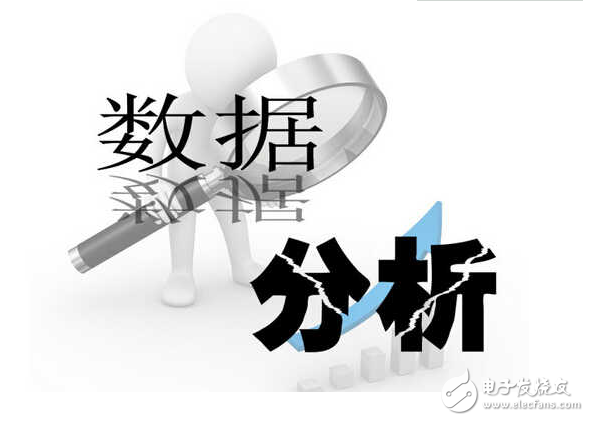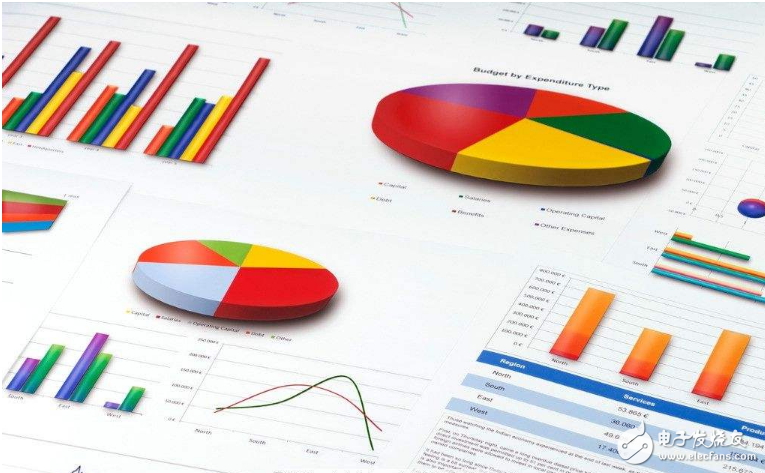Data analysis is a process of collecting, sorting, processing, and analyzing data for a purposeful purpose, based on commercial purposes, to refine valuable information.
Data analysis, as the name suggests, data plus analysis. In other words, you must take the data first and analyze it later. A large amount of first-hand data and second-hand data collected are analyzed to maximize the function of developing data and to play the role of data. It is a process of detailed research and summarization of data in order to extract useful information and form conclusions.
It may be easy to say, but it is difficult to apply it to the actual process. This is the heartfelt statement of many students. And why this is the cause, I think it is two reasons:
1, the theme and the confusion of ideas
2, the lack of importance of data analysis

The process is summarized as follows: clear analysis of the purpose and framework, data collection, data processing, data analysis, data presentation and report writing.
1. Defining the purpose and framework of the analysis
An analysis project, who is your data object? What is the business purpose? What business problem is to be solved? Data analysts must be aware of these things.
Based on business understanding, organize analysis framework and analysis ideas. For example, reducing the loss of new customers, optimizing the effectiveness of activities, improving customer response rates, and more. The data requirements of different projects and the analytical methods used are also different.
2, data collection
Data collection is a process of purposely collecting and integrating relevant data according to the determined data analysis and framework content. It is a basis for data analysis.
3, data processing
Data processing refers to processing and sorting the collected data for data analysis. It is an indispensable stage before data analysis. This process is the most time-consuming process in the whole process of data analysis, and it also depends to some extent on the construction of data warehouse and the guarantee of data quality.
Data processing mainly includes processing methods such as data cleaning and data conversion.
4, data analysis
Data analysis refers to the exploration and analysis of prepared data through analytical means, methods and techniques, and discovers causal relationships, internal connections and business rules, and provides decision-making reference for business purposes.
At this stage, the ability to harness data and conduct data analysis involves the use of tools and methods. The first one should be familiar with the conventional data analysis methods. The most basic ones should be to understand the principles, scope, advantages and disadvantages, and interpretation of the results of the multivariate and data analysis methods such as variance, regression, factors, clustering, classification, time series, etc. Familiar with data analysis tools, Excel is the most common, general data analysis can be done through Excel, and then familiar with a professional analysis software.
5, data display
Under normal circumstances, the results of data analysis are presented by means of graphs and tables. As the saying goes: words are not as good as tables, and tables are not. . Data presentation means that data analysts can more intuitively present the information, opinions and suggestions they want to present. .
Commonly used charts include pie chart, line chart, column chart/bar chart, scatter chart, radar chart, etc., pyramid chart, matrix chart, funnel chart, Pareto chart and so on.
6. Write a report
The final stage is to write a data analysis report, which is a presentation of the results of the entire data analysis. Through the analysis report, the purpose, process, results and solutions of the data analysis are fully presented for reference for commercial purposes.
A good data analysis report, first of all, needs to have a good analytical framework, and the picture is well-organized, the level is clear, and can make the readers at a glance. The clear structure and clear distinction between the primary and the secondary can enable the reader to correctly understand the contents of the report; the pictures and texts can make the data more lively and lively, improve the visual impact, and help the reader to more clearly and intuitively see the problems and conclusions, thus generating thinking.
In addition, data analysis reports need to have clear conclusions, recommendations and solutions, not just to find out the problem, the latter is more important, otherwise it can not be a good analysis, but also lose the meaning of the report, the original intention of the data is The analysis that is carried out to solve a commercial purpose cannot be pursued.

Heat shrinkable tubes help you achieve the electrical insulation, mechanical protection, environmental seal and stress relief you need in applications such as rear end seal, split point and connector to cable transfer.
It can be safely used in place of baling, molding or gluing.
When heated, the heat shrinkable tube will fit into the base size and shape of the substrate to speed up and simplify the installation process.
With high expansion, the most damaged cable enclosures can be repaired without removing the connector. Heat shrinkable tubes come in a wide variety of materials, colours and sizes and can be produced in a variety of shapes such as rolls, 1m lengths and cut pieces.
Heat Shrink Tubing,Heat Shrink,Heat Shrink Cable,Shrink Wrap Tubing
CAS Applied Chemistry Materials Co.,Ltd. , https://www.casac1997.com